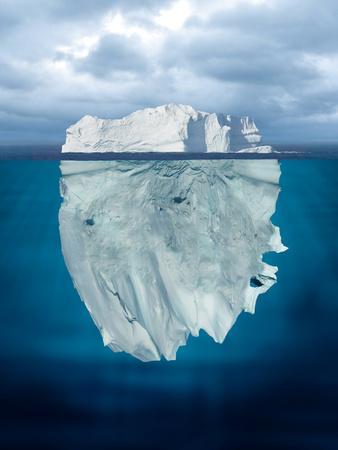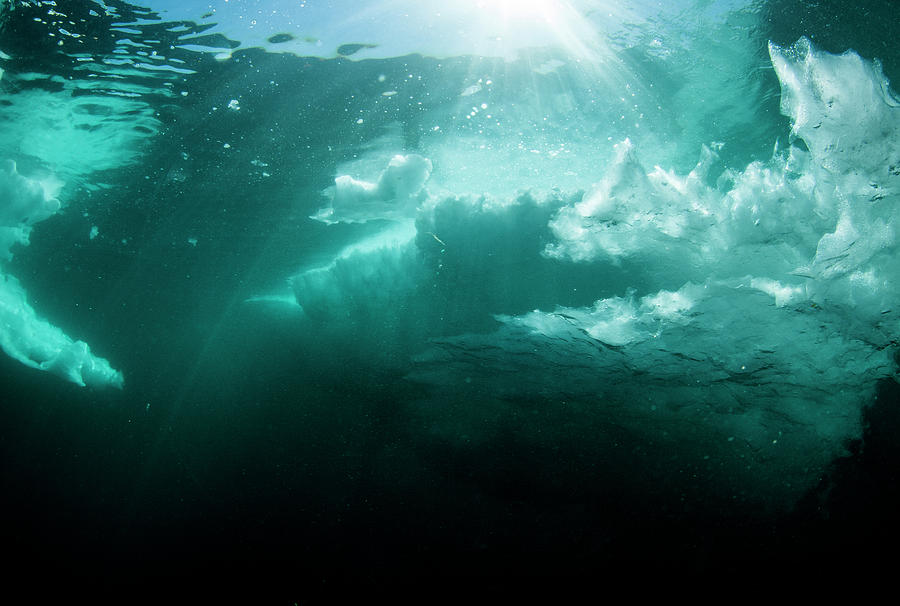
One of the things that Craig Aurness understood was that the whole idea with stock images is to create images that many different clients will be able to use in many different ways. Is there a method to creating great stock photos, like the iceberg? One of the latest uses was for a Coors Light commercial on TV. It’s sold refrigerators, de-icing machines. You can also use it to talk about anything with ice. ‘What you see isn’t what you get,’ is another. It’s been used by thousands of clients for different things. Chrysler was one of the first, a big double-page ad in a dozen magazines.
#UNDERWATER ICEBERG PHOTOGRAPHY MANUALS#
He advertised in graphic design manuals and sent out direct mailers. How did this iceberg photograph get so widespread ?īy the time we finished creating the iceberg, Craig already had a marketing plan for it. We created what at that time was an enormous file, eight megapixels. This is pretty early in the days of Photoshop. Craig Aurness, who ran the stock photo agency I worked for, told me to research what a real iceberg would look like, the physics of how it would float in the water, so we could get it accurate. I just cut out a section of an iceberg and then flipped it and put it underwater. I took the picture of the bottom part of the iceberg in Alaska, above water. I took the picture of the top part of the iceberg in Antarctica when I was there on assignment. The shot of the clouds was taken here in Santa Barbara. The image is composed of four separate pictures. How did you capture such a majestic-looking iceberg? From his home in Santa Barbara, California, Clevenger had a chat with Nautilus about the origins and remarkable longevity of his most famous picture-as well as how it was photoshopped. When it came out, it was actually pretty original.
#UNDERWATER ICEBERG PHOTOGRAPHY PROFESSIONAL#
A professional photographer for more than three decades, he’s shot for National Geographic, Outside, Audubon, and other magazines, yet he says this image is still what he’s most known for. The iceberg’s hidden bulk takes on an air of mystery and as-yet unrealized potential, making it a powerful metaphor-and a money-maker. The expression, and the photo, have become a mainstay of inspirational posters, expressing concepts like success, imagination, and the human condition. The man and his million-dollar photo: Ralph Clevenger next to the photo he created. Ralph Clevenger, below, is the man who took it. If you Google image search “iceberg,” or even “tip of,” it’s the first one that comes up.

Over the past 20 years, one photograph has become associated with the cliché more than any other.

Emory Kristof / National Geographic via NOAA Titanic survivors in lifeboats on their way to the RMS Carpathia in 1912.What do the Volkswagen diesel scandal and the European migrant crisis have in common? They’ve both been referred to as the “tip of the iceberg.” The popular expression reflects the fact that, as impressive as the visible portion of an iceberg is, the vast majority of it (usually about 90%) is underwater. Keystone Press via Alamy The steering motor on the bridge of the Titanic. via Everett Collection A deep-water rattail fish swims by the Titanic wreckage at a depth of more than 12,000 feet in 1985. National Geographic via NOAA file A MIR submersible observes the bow of the Titanic in 2003. Atlantic Productions / Magellan The bow of the Titanic. Mary Evans / Ronald Grant / Everett Collection The new 3D scans of the Titanic on the floor of the Atlantic Ocean reveal the wreck in never-before-seen detail.

Krista Few / Getty Images In September 2001, director James Cameron and a group of scientists embarked on an expedition to the Titanic wreckage. Heritage Images / Getty Images file The starboard wing propeller. Institute for Exploration, Center for Archaeological Oceanography / via AP file Workmen stand under one of the Titanic's propellers in 1911. Ghosts of the Abyss via Alamy The remains of a coat and boots buried in mud near the stern of the Titanic in 2004. George Rinhart / Corbis via Getty Images file The Titanic's dining room from a 2003 wreckage expedition.


 0 kommentar(er)
0 kommentar(er)
